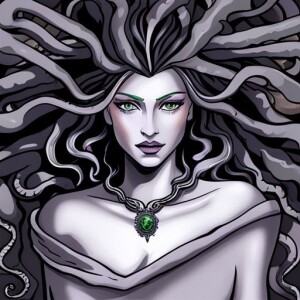
The legend of Medusa is a captivating tale that has mesmerized people worldwide for centuries. According to Greek mythology, Medusa was a stunning beauty with luscious hair, but she was cursed by the goddess Athena. The curse transformed her hair into venomous snakes and disfigured her face so horribly that anyone who gazed upon her turned to stone.
Medusa was once a priestess of Athena, but she was punished for being raped by Poseidon in Athena’s temple. Athena’s wrath was so fierce that she transformed Medusa into the monstrous creature that we know today. Medusa’s curse made her an outcast, feared and despised by all who laid eyes on her. She was forced to dwell alone in a cave, shunned by everyone.
Despite her fearsome reputation, Medusa was not malevolent. Instead, she was a victim of circumstance, cursed by a goddess who was envious of her allure and power. Medusa’s story is a heart-wrenching one, a lesson about the hazards of jealousy and vengeance. Her image has been immortalized in art and literature, from ancient Greek pottery to contemporary comic books.
The story of Medusa has inspired countless interpretations throughout the ages. Some see her as a symbol of feminine might, while others consider her a monster to be vanquished. Regardless of how one perceives her tale, it’s undeniable that Medusa remains one of the most captivating and long-standing characters in Greek mythology. Her story has been retold in countless ways, and it continues to enthrall audiences worldwide to this day.
